Economy
(i) Economic Development of Guangxi
In recent years, Guangxi’s economy has maintained a rapid, steady and balanced development momentum. In 2005, GDP exceeded 400 billion yuan , 407.575 billion yuan to be exact, up by 13.2%. The total production value of primary industry reached 91.25 billion yuan, and its contribution rate to economic growth was 11.8%. The total value of secondary industry was 151.068 billion yuan, and contributed 56.2% to economic growth and the increment of tertiary industry amounted to 165.257 billion yuan, and contributed 32% to economic growth. Per capita GDP (taking into account the permanent residents) was 8,788yuan. Per capita GDP exceeded US$1,000. In 2005, the fiscal revenue of Guangxi exceeded 40 billion yuan, 47.537 billion yuan to be exact.
GDP Ratio of Guangxi in 2005
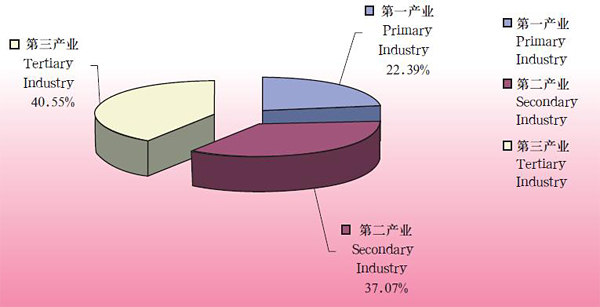
(ii)Resources of Guangxi
Water Resources
Guangxi enjoys rich water resources with plenty of rainfall and many rivers. The total length of surface rivers is 34,000km with a water area of about 4,700km2. Each of the 937 rivers has accumulative rain area of more than 50km2. 246 rivers have a theoretical deposit of above 10,000 kilowatts each, and the developable capacity is 18.97 million kilowatts. The annual power generation capacity is 81.1 billion kwh, ranking 8th in China and is one of the three major priority bases to develop hydropower resources. The total installed capacity of Longtan Hydropower Station, which is now under construction and is a special large hydropower project, will be 5.4 million kw. only second to the Three Gorges Project. Will be 5.4 million kw. After completed, besides power generation and flood prevention, it will share some pressure with downstream cascade hydropower stations.
Mineral Resources
Guangxi is one of the ten key nonferrous metals production areas in China. 145 mineral have been discovered (including subminerals), among which, the reserves of 97 minerals have been proved and 64 rank Top 10 in China in terms of deposits. And among the top 64, 14 rank national first including manganese, indium, hafnium, scandium, arsenic, bentonite, limestone for fertilizer, piezo-electric quartz, agate, shale for bricks or tiles, shale for cement matching materials, clay for bricks and tiles. Manganese and tin reserves account for 1/3 of the national total respectively; 25 of the 64 minerals are ranking 2nd to 6th of the national total (the deposit of antimony accounts for 1/4 of the national ensured reserve). Pingguo Aluminum Base, Dachang Tin-Polymetallic Ore Field and Laibin Manganese Ore Field are all famous ore fields in China and enjoy great potential for development.
Forest Resources
The warm and humid climate in Guangxi provides favorable environment for plants and animals. Guangxi has more than 280 families of plants with nearly 8,000 species. The forest area of Guangxi is 9.8191 million hectares, with a coverage rate of 41.33%. There are more than precious 30 species of trees including silver fi r,‘ nanmu’ (Chinese juniper wood), teak and tiemu (Mesua ferrea Linn). 729 species (or subspecies) of amphibian animals and 40 of them are included in the national protection list. More than 700 species of fruits, particularly tropical fruits, such as pineapple, lichee and mango.
Marine Resources
The beach area along the coast of Guangxi is 1,005 km2, and 6,488 km2 are shallow waters within the depth of 20 meters. As a famous Chinese fishery ground, Beibu Gulf has 500-odd fish species and over 220 shrimp or crab species. In the shallow sea area, there are more than 50 economic fish species and 10-odd commercial shrimp species. Hepu Pearls are abundant here. With rich marine mineral resources, the coastal areas enjoy large deposits of titanium, quartz sands and xenotime. There are also some reserves of petroleum and natural gas in the shallow sea area in southwest Beihai.
(iii) Industrial Development of Guangxi
In 2005, industries in Guangxi witnessed fast development. The industrial increment of large scale industries hit 126.484 billion yuan. The contribution rate of industries to economic growth reached 47.6%. The contribution heavy industries picked up speed with an increment of 54.25 billion yuan, and the increment of light industries amounted to 29.242 billion yuan. The contribution rate of metallurgy, power, automobile, nonmetallic products, chemical industry and agricultural by-products to industrial growth reached 70%. Enterprises with different ownerships developed together, among which, the increment of SOEs hit 21.493 billion yuan; and that of the collective ownership increased 1.83 billion yuan; shareholding companies, 31.997 billion yuan, and enterprises with foreign or Hong Kong, Macao and Taiwan investments, 15.815 billion, yuan.
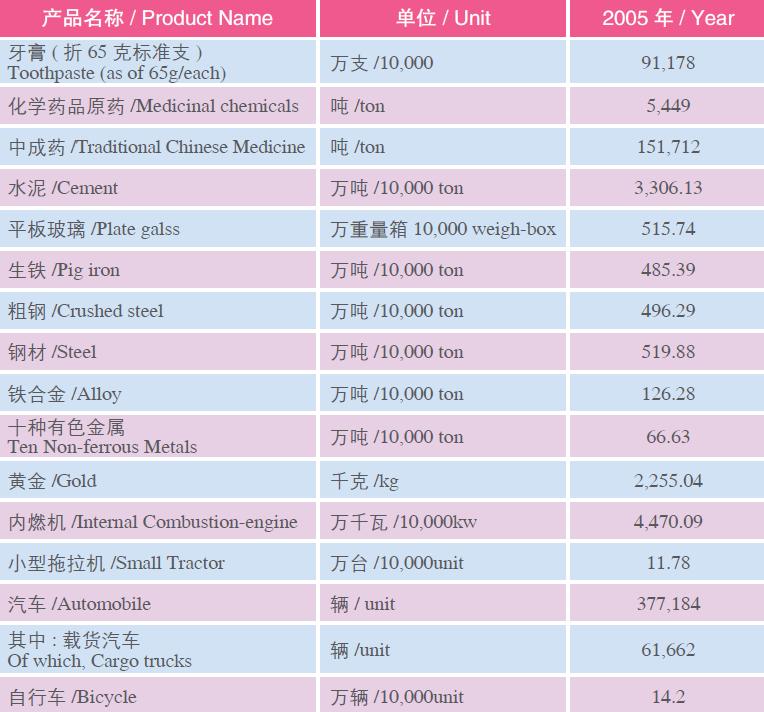
(iv) Agricultural Development of Guangxi
Guangxi is a major agricultural province and is abundant in agricultural products including south sub-tropical fruits, vegetables, sugarcane, hemp crops, silkworm, medicinal crops, perfume crops, turpentine, tung oil, three yellow chicken, milk buffalo and aquatic products. In 2005, the gross output value of agriculture, forestry, stock raising and fishery was 144.837 billion yuan, among which, 71.189billion yuan for agriculture, 6.168 billion yuan for forestry, 51.16 billion yuan for stock raising and 14.361 billion yuan for fishery.
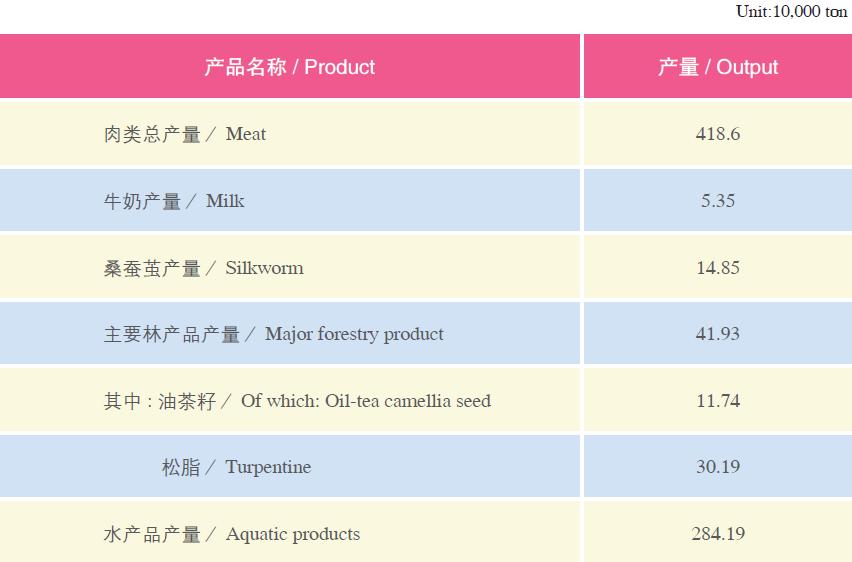
(v) Commercial Development of Guangxi
Import and Export
In 2005, the total import and export value was US$5.18285 billion, among which, US$2.30544 billion yuan for import and US$2.87741 billion for export. In the same year, 173 countries and regions did business with Guangxi and the export to the 5 major traditional markets, namely, ASEAN, EU, US, Hong Kong and Japan, reached US$2.18442 billion, taking up 75.9% of Guangxi’s total export. ASEAN remained as Guangxi’s largest trading partner, enjoying an import value of US$830.59 million from Guangxi. The TOP 10 countries or regions in terms of import value from Guangxi were Brazil, Vietnam, Australia, the U.S., Japan, Indian, Germany, Korea, Taiwan of China and Canada.
Chart of Exports in Different Countries & Regions of Guangxi in 2005
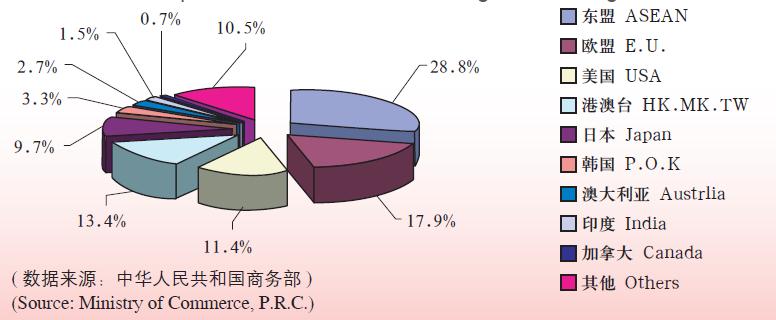
Import of Exports in Different Countries & Regions of Guangxi in 2005
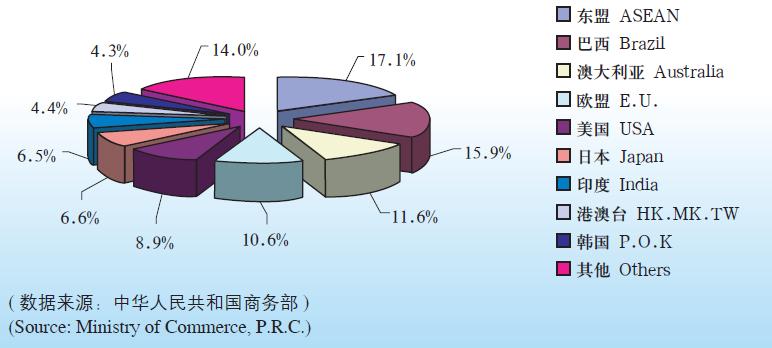
Foreign Investment Utilization
In 2005, Guangxi saw the establishment of another 351 foreign invested enterprises. Of them, 25 were large projects with additional contractual foreign capital of US$10 million, a contractual value of 1.10182 billion. The actually utilized FDI was US$378.66 million.
FDI Sources of Guangxi in 2005
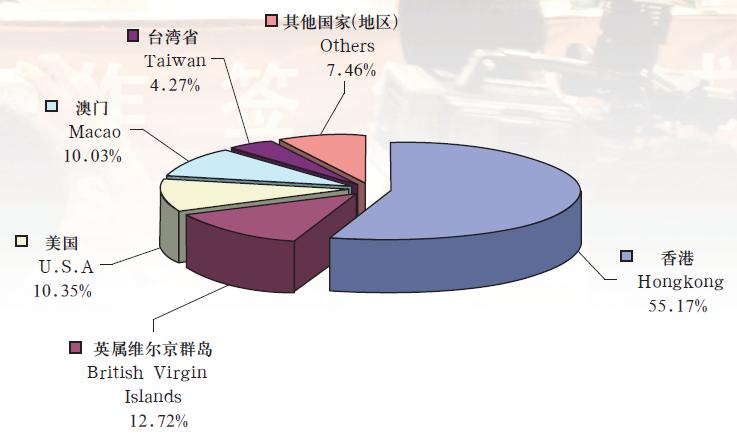
Country Distribution of Foreign Contracted Project of Guangxi in 2005
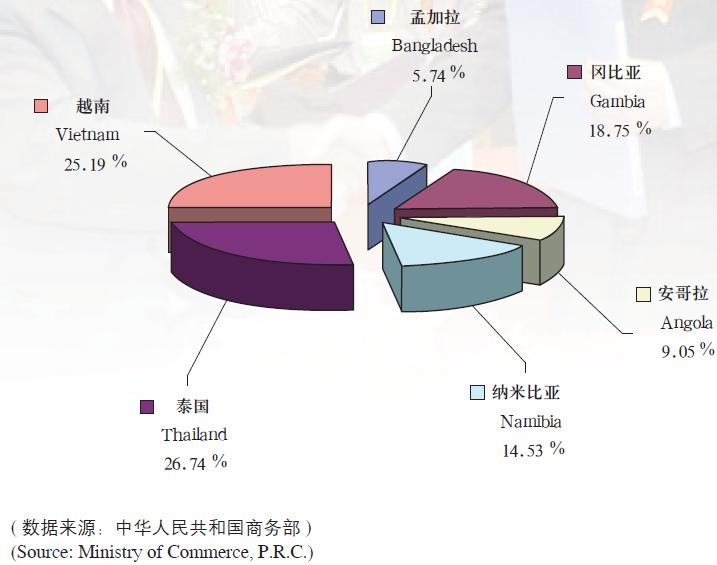
Foreign Economic Cooperation
In 2005, the contracted volume of foreign contracted projects and labor cooperation amounted to US$ 399.98 million. The turnover was US$ 25.03 million. The volume of FDI to foreign countries amounted to US$ 14.9695 million, among which, Chinese investment was US$11.8895 million, covering 12 countries and regions, including Vietnam, Hong Kong, Malaysia and Angora, etc.
FDI Sources of Guangxi in 2005
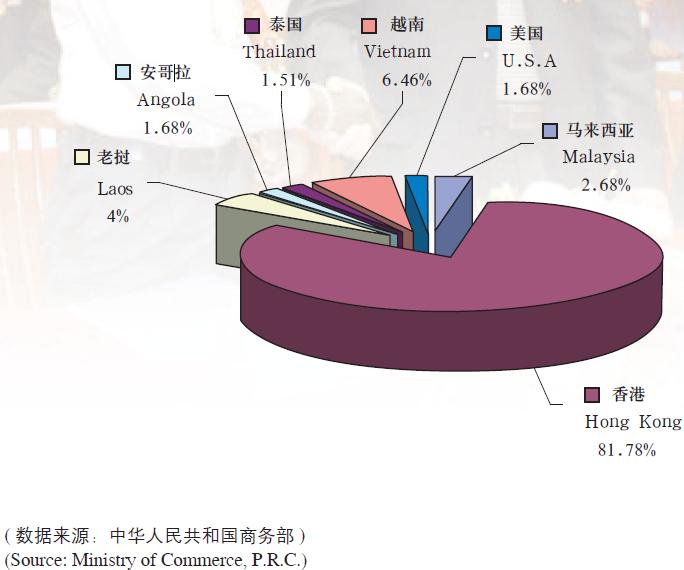
Domestic Trade
In 2005, the total retail sales of consumer goods in Guangxi hit 139.7 billion yuan.Various wholesale and retail markets witnessed great improvement. Chain businesses, logistics and distribution, e-commerce and other modern circulation means developed fast. Guangxi Government attached great importance to the rectification of market economy order and have helped the enterprises to create new brands and protect the intellectual property rights. With the acceleration of opening up of business sectors, many well-known domestic circulation enterprises and famous transnational groups have come to Guangxi to do business.
(vi) Industrial Infrastructure
Sugar Making
Sugar making industry of Guangxi occupies an important position in China. The cane sugar output accounts for more than a half of the national total. With a long industrial chain of sugar making industry, its comprehensive utilization technologies including making paper or board from bagasse, produce amino acid, single-cell protein, alcohol and extraction of acetone and other organism chemicals, compound fertilizer from filter mud, have reached the top level in the world.
Power Industry
In 2005, the power generation capacity was 44.604 billion kwh. By 2010, the total installed capacity of Guangx will reach 25.6 million kw; by 2020, it will hit 50 million kw and gradually Guangxi will become an important base for the national project of “transmitting electricity from the west to the east”.
Machinery Industry
A group of competitive enterprises have taken shape, covering 11 sub-trades of Guangxi’s machinery industry, such as, Yuchai Machinery, Co., Ltd, the largest internal combustion engine producer nationwide; Liuzhou Construction Machinery Factory, the national No.1 producer of prestress works, and Liuzhou Engineering Machinery Co., Ltd, a flagship enterprise in loading machinery industry of China.
Automobile Industry
Automotive industry is one of the pillar industries, and Guangxi is making every effort to develop it. In 2005, the output of automobiles was 380,000 units. Three major domestic automobile groups including China First Automotive Works, Shanghai Automotive Industry Corporation(Group) and DongFeng Auto Factory as well as international auto companies such as GM of the U.S. and Renault of Korea have built up production bases in Guangxi. An auto parts industrial chain centering with Liuzhou, Yulin, Nanning and Guilin is gradually taking shape. Auto parts manufacturing is also further improved.
Aluminum Industry
Aluminum industry is a competitive pillar industry in Guangxi with the largest potential for development. By the year of 2010, Guangxi will have an annual capacity of 5 million tons of alumina, 1.5 million tons of electrolytic aluminum and 1.2 million tons of aluminum processing and become an important aluminum industrial base in Asia, even the world at large.
Pharmacy
With rich TCM resources, Guangxi has produced 13 medicaments TCM products with 410 varieties, among which, 18 of them are new varieties in China and 55 are in the national TCM protection list. A group of excellent brands have formed including Watermelon Frost and Golden Throat Lozenge. At present, GMP reconstruction of pharmacy enterprises in Guangxi has been initially completed and now Guangxi is going on the way for research on plantation of TCM GAP (standard for TCM quality control) and industrialized plantation.
Food Industry
Various tropical and sub-tropical fruits, vegetables, sea products and local economic crops provide abundant raw materials for food industry. So far, a group of well-known brands such as Halves Foodstuff, Wuzhou Bingquan Food, Liuzhou Golden Throat and Xiangshan Can Food have been established. The output of can food ranks national third.
(vii)Brand Commodities
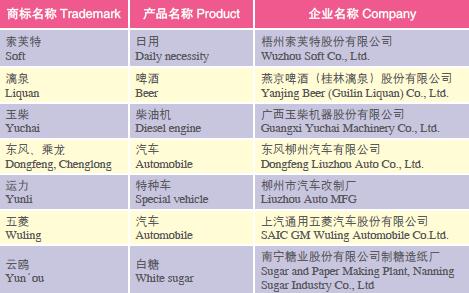
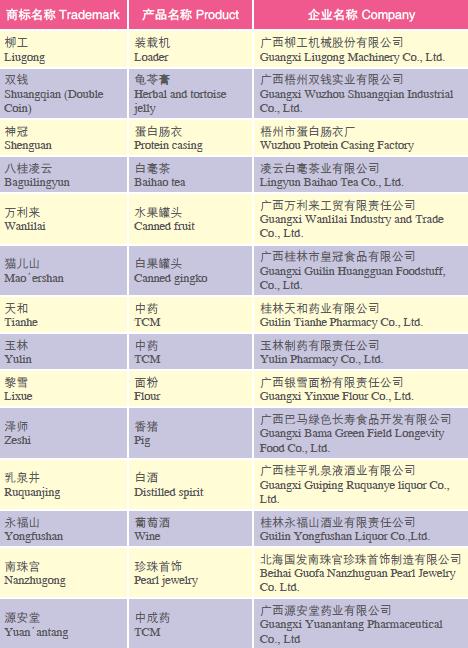
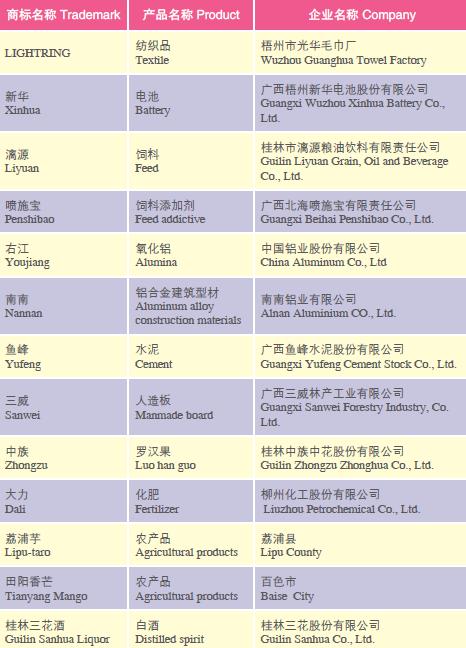
Doing Business in Guangxi Zhuang Autonomous Region of China:I.Survey
Doing Business in Guangxi Zhuang Autonomous Region of China:III.Investment
Doing Business in Guangxi Zhuang Autonomous Region of China:IV.Development Zones





